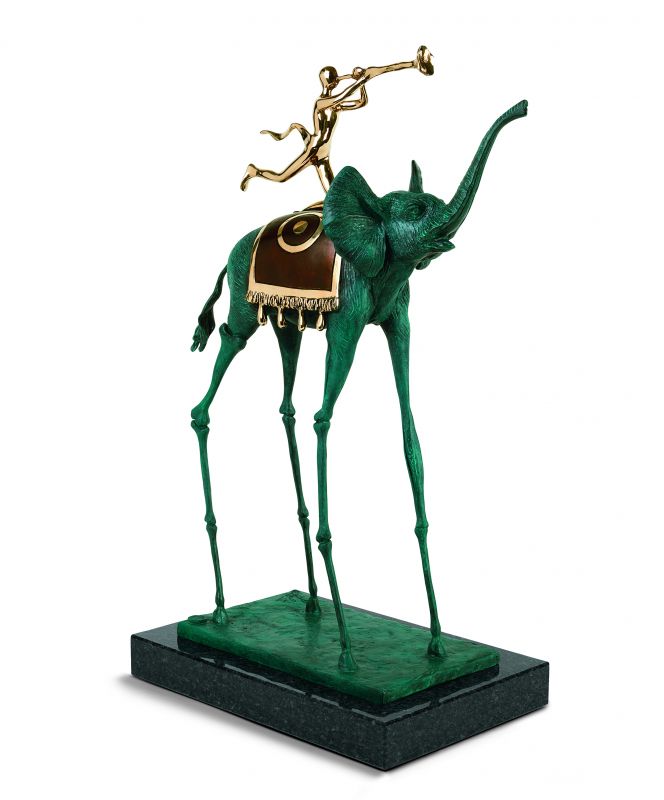Enquire
Chat with us on WhatsApp
Chat with us on WhatsApp
About the artwork
The elephant, Dalí’s symbol of the future, is one of his favourite images, often depicted carrying an object on its back. Dalí subverts the idea of the elephant being heavy and strong, by giving it impossibly long legs. It is an example of pure Daliesque whimsy, a fantastic image created by juxtaposing the immense weight with the fragility of the thin joints. There is a sense of otherworldliness as Dalí’s elephants defy the laws of nature moving effortlessly, almost gracefully. These spindly legs remind us of stilts and crutches, which Dalí used so often in his work. The elephant was a recurring theme, first appearing in his 1944 painting Dream Caused by the Flight of a Bee Around a Pomegranate a Second Before Awakening. The Triumphant Elephant is one of the artist’s most iconic and instantly recognizable images. The figure resting lightly on the pachyderms back is an angel, an image which featured widely in Dalí’s oeuvre. In Dalinian psychology, the messenger represents the subconscious that guides man through life. The elephant raises his trunk triumphantly as the jubilant herald mirrors this action trumpeting success and hope for the future.
About the artist
Born on May 11, 1904, in Figueres, Spain, Salvador Dalí’s
eccentric nature and talent for self-promotion made him the most famous
representative of the surrealist movement and one of the most widely recognised
artists in the world. Identified as an artistic prodigy from a tender age, Dalí attended the drawing school at the Colegio de Hermanos Maristas and the
Instituto in Figueres, Spain in 1916. In 1922, he enrolled in the Academia de
San Fernando in Madrid and received recognition during his first solo show
held in Barcelona in 1925. Dalí became internationally known after the third
annual Carnegie International Exhibition in Pittsburgh in 1928 and grew to
immense notoriety and fame. Today, his sculptures and paintings are exhibited
in the most prestigious museums in the world and part of many coveted private
and public collections.
Go to Dali's profile ›


